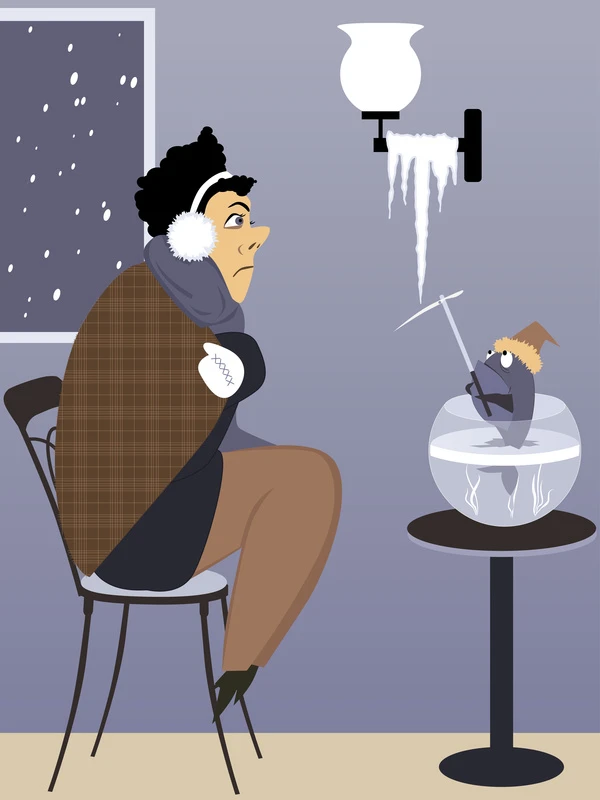This post contains affiliate links. I only recommend products I use and love. Read the full disclosure here
Last Updated on August 22, 2024 by Alaina Bullock
Your home can be your ultimate protection against the elements — your last line of defense. It’s evolved from caves and huts to the technology-infused structure it is today, able to withstand an assortment of conditions. When your home begins to fail or shows signs of failure (such as heat loss), it can poke a hole in your sense of security.
Often enough, finding and correcting these faults can be difficult, expensive, and can lead to a disheartened disposition. The harsh weather of the winter can be a prime example of conditions in which you rely heavily on your home’s performance. As it shows signs of failure, a homeowner has no choice but to correct them.
Five Common Sources of Heat Loss
Fear not, though, most points of failure are easily recognizable and fixable with a little bit of diligence. Below are the top five most common sources of heat loss in your home.

Number Five: Switches and Outlets
It’s never a good sign when you find cold air blowing in from behind your wall switches and outlets. Usually, this is a result of a larger air leak somewhere in your walls which allows the cold air to flow through smaller openings. The best way to stop these types of drafts is to plug the outlet. Many hardware and home improvement stores sell adhesive foam gaskets which can help seal off the draft and reduce the amount of heat loss. It’s a good idea to hire a professional to do an inspection in this case, though, and the foam gasket is only a temporary fix.
Number Four: Drafts
Drafts can come from just about anywhere in your home and can account for a majority of heat loss. Doors, windows, and fireplaces are all common sources of a draft, although any place that has a crack or hole is a potential source of heat loss as well. In a typical home, 38% of heat is lost through windows and doors.
Similar to the outlet solution, the best way to fix a draft is to plug it. Easier said than done when you have to find the draft first. A simple way to test for drafts is to light an incense stick and hold it near the places you suspect are drafty. If the smoke blows away from the source, then you’ve found your culprit. You can use caulk around window jambs to seal them, and many stores sell door draft stoppers that can be slipped onto the base of your door. You could even make your own simple DIY Draft Stopper from an old pair of socks!
Number Three: Windows
Windows present a two-front battle: drafts and covers. As mentioned in the last section, windows are notorious places for drafts to occur. Single-pane windows, common in older homes, attribute to 50% of heat loss, and window jambs and frames are also possible drafty locations. The other side of window related heat loss is due to their ineffectual insulation. Glass doesn’t present the best method of insulation, and as such an uncovered window will naturally allow for more heat loss than a solid wall.
Investing in drapes or curtains can be an effective way of adding to your windows’ ability to keep heat in during the winter, as well as keep your home cool during the summer. You can also replace your windows with energy efficient ones that meet the U.S. Department of Energy’s Energy Star program, which can lower energy bills by 7% to 15%.
Number Two: Roof
Your roof is another area that is a common contributor to a loss of heat. Naturally, heat rises and so a poorly ventilated and/or insulated roof is ill-equipped to prevent that heat from escaping. The average roof should be inspected once or twice a year so that issues with ventilation and insulation can be addressed, as well as any cracks or holes. If you find a hole or gap in your roof in the meantime, you can seal them yourself to stop the heat loss.
Number One: Walls
A wall that is improperly insulated and ventilated, or is simply riddled with holes and cracks can largely attribute to a loss of heat. Unfortunately, adding more or updated insulation can often be a costly and difficult job, but if the problem is severe enough it may just be worth it. Consult with an expert to find out your best option if you find yourself in this scenario.
In Summary
Nobody likes a drafty home, and nobody especially likes a home that can’t seem to get warm. Safeguard yourself against the elements by ensuring your house is properly maintained.
